Related Research Articles
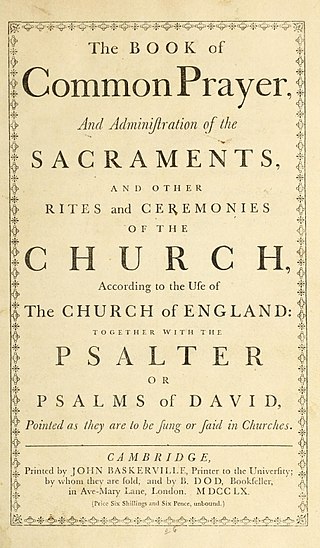
The Book of Common Prayer (BCP) is the name given to a number of related prayer books used in the Anglican Communion and by other Christian churches historically related to Anglicanism. The first prayer book, published in 1549 in the reign of King Edward VI of England, was a product of the English Reformation following the break with Rome. The 1549 work was the first prayer book to include the complete forms of service for daily and Sunday worship in English. It contains Morning Prayer, Evening Prayer, the Litany, Holy Communion, and occasional services in full: the orders for Baptism, Confirmation, Marriage, "prayers to be said with the sick", and a funeral service. It also sets out in full the "propers" : the introits, collects, and epistle and gospel readings for the Sunday service of Holy Communion. Old Testament and New Testament readings for daily prayer are specified in tabular format, as are the Psalms and canticles, mostly biblical, to be said or sung between the readings.

Thomas Cranmer was a religious figure who was leader of the English Reformation and Archbishop of Canterbury during the reigns of Henry VIII, Edward VI and, for a short time, Mary I. He helped build the case for the annulment of Henry's marriage to Catherine of Aragon, which was one of the causes of the separation of the English Church from union with the Holy See. Along with Thomas Cromwell, he supported the principle of royal supremacy, in which the king was considered sovereign over the Church within his realm.
The Thirty-nine Articles of Religion, finalised in 1571, are the historically defining statements of doctrines and practices of the Church of England with respect to the controversies of the English Reformation. The Thirty-nine Articles form part of the Book of Common Prayer used by the Church of England, and feature in parts of the worldwide Anglican Communion, as well as by denominations outside of the Anglican Communion that identify with the Anglican tradition.
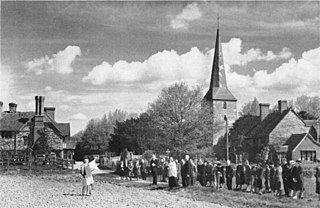
Rogation days are days of prayer and fasting in Western Christianity. They are observed with processions and the Litany of the Saints. The so-called major rogation is held on 25 April; the minor rogations are held on Monday to Wednesday preceding Ascension Thursday. The word rogation comes from the Latin verb rogare, meaning "to ask", which reflects the beseeching of God for the appeasement of his anger and for protection from calamities.
Litany, in Christian worship and some forms of Jewish worship, is a form of prayer used in services and processions, and consisting of a number of petitions. The word comes through Latin litania from Ancient Greek λιτανεία (litaneía), which in turn comes from λιτή (litḗ), meaning "prayer, supplication".
Christian liturgy is a pattern for worship used by a Christian congregation or denomination on a regular basis. The term liturgy comes from Greek and means "public work". Within Christianity, liturgies descending from the same region, denomination, or culture are described as ritual families.

A procession is an organized body of people walking in a formal or ceremonial manner.
A bidding-prayer is the formula of prayer, or exhortation to prayer, said during worship in churches of the Anglican Communion. It occurs during the liturgy of the word, following the sermon. Such formulae are found in the oldest of Divine Liturgy forms in the Greek church, such as the liturgy of Saint John Chrysostom, as well as in the Catholic liturgies of the early Gallican Rite, and pre-Reformation England.
The term Black Rubric is the popular name for the declaration found at the end of the "Order for the Administration of the Lord's Supper" in the Book of Common Prayer (BCP), the Church of England's liturgical book. The Black Rubric explains why communicants should kneel when receiving Holy Communion and excludes possible misunderstandings of this action. The declaration was composed in 1552, but the term dates from the 19th century when the medieval custom of printing the rubrics in red was followed in editions of the BCP while the declaration was printed in black.

In Christian worship, Marian litany is a form of prayer to Mary, mother of Jesus used in church services and processions, and consisting of a number of petitions.
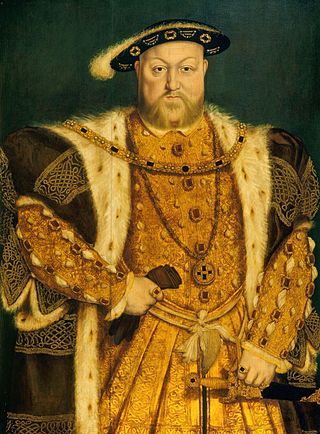
The English Reformation took place in 16th-century England when the Church of England was forced by its monarchs and elites to break away from the authority of the Pope and the Catholic Church. These events were part of the wider European Reformation, a religious and political movement that affected the practice of Christianity in Western and Central Europe.

The 1928 Book of Common Prayer, sometimes known as the Deposited Book, is a liturgical book which was proposed as a revised version of the Church of England's 1662 Book of Common Prayer. Opposing what they saw as an Anglo-Catholic revision that would align the Church of England with the Catholic Church—particularly through expanding the practice of the reserved sacrament—Protestant evangelicals and nonconformists in Parliament put up significant resistance, driving what became known as the Prayer Book Crisis.
Media vita in morte sumus is a Gregorian chant, known by its incipit, written in the form of a response, and known as "Antiphona pro Peccatis" or "de Morte". The most accepted source is a New Year's Eve religious service in the 1300s. Reference has been made to a source originating in a battle song of the year 912 by Notker the Stammerer, a monk of the Abbey of Saint Gall: however, the Synod of Cologne declared in 1316 no one should sing this without prior permission of the residing bishop.

"Remember not, Lord, our offences", Z.50, is a five-part choral anthem by the English baroque composer Henry Purcell (1659–95). The anthem is a setting of a passage from the litany compiled by Thomas Cranmer, Archbishop of Canterbury, and later included in the Anglican Book of Common Prayer. It was composed circa 1679–82 at the beginning of Purcell's tenure as Organist and Master of the Choristers for Westminster Abbey.
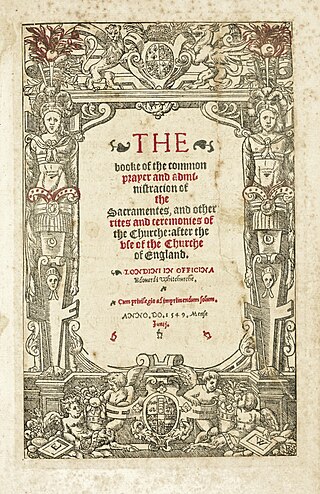
The 1549 Book of Common Prayer (BCP) is the original version of the Book of Common Prayer, variations of which are still in use as the official liturgical book of the Church of England and other Anglican churches. Written during the English Reformation, the prayer book was largely the work of Thomas Cranmer, who borrowed from a large number of other sources. Evidence of Cranmer's Protestant theology can be seen throughout the book; however, the services maintain the traditional forms and sacramental language inherited from medieval Catholic liturgies. Criticised by Protestants for being too traditional, it was replaced by the significantly revised 1552 Book of Common Prayer.

Primer is the name for a variety of devotional prayer books that originated among educated medieval laity in the 14th century, particularly in England. While the contents of primers have varied dependent on edition, they often contained portions of the Psalms and Latin liturgical practices such as the Little Office of the Blessed Virgin Mary. Medieval primers were often similar to and sometimes considered synonymous with the also popular book of hours ; typically, a medieval horae was referred to as a primer in Middle English.
Protestant liturgy or Evangelical liturgy is a pattern for worship used by a Protestant congregation or denomination on a regular basis. The term liturgy comes from Greek and means "public work". Liturgy is especially important in the Historical Protestant churches, both mainline and evangelical, while Baptist, Pentecostal, and nondenominational churches tend to be very flexible and in some cases have no liturgy at all. It often but not exclusively occurs on Sunday.
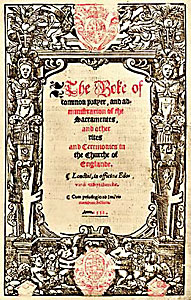
The 1552 Book of Common Prayer, also called the Second Prayer Book of Edward VI, was the second version of the Book of Common Prayer (BCP) and contained the official liturgy of the Church of England from November 1552 until July 1553. The first Book of Common Prayer was issued in 1549 as part of the English Reformation, but Protestants criticised it for being too similar to traditional Roman Catholic services. The 1552 prayer book was revised to be explicitly Reformed in its theology.

The 1604 Book of Common Prayer, often called the Jacobean prayer book or the Hampton Court Book, is the fourth version of the Book of Common Prayer as used by the Church of England. It was introduced during the early English reign of James I as a product of the Hampton Court Conference, a summit between episcopalian, Puritan, and Presbyterian factions. A modest revision of the 1559 prayer book, the Jacobean prayer book became the basis of the 1662 Book of Common Prayer, a still-authorized liturgical book within the Church of England and global Anglicanism.

The 1559 Book of Common Prayer, also called the Elizabethan prayer book, is the third edition of the Book of Common Prayer and the text that served as an official liturgical book of the Church of England throughout the Elizabethan era.
References
- 1 2 3 MacCulloch 2016, p. 328.
- ↑ Wohlers.
- 1 2 3 4 5 Jeanes 2006, p. 23.
- ↑ MacCulloch 2016, p. 330.
- 1 2 Procter & Frere 1908, pp. 31–32.
- 1 2 Cross & Livingstone 1974.
- ↑ MacCulloch 2016, p. 329.
- ↑ Procter & Frere 1908, p. 414.
- ↑ Duffy 2005, p. 443.
- ↑ MacCulloch 2016, pp. 329–330.
- ↑ MacCulloch 2016, pp. 331–332.
- ↑ Jacobs 2013, p. 4.
- ↑ Marshall 2017, p. 433.